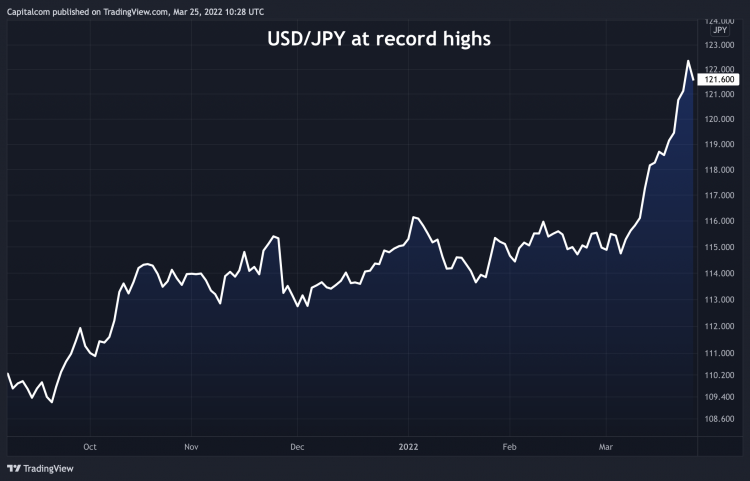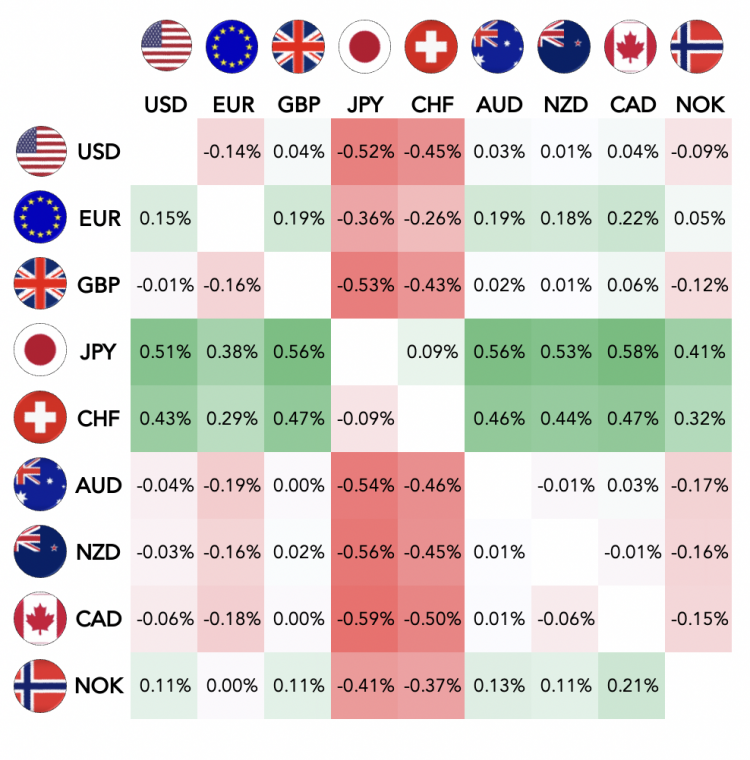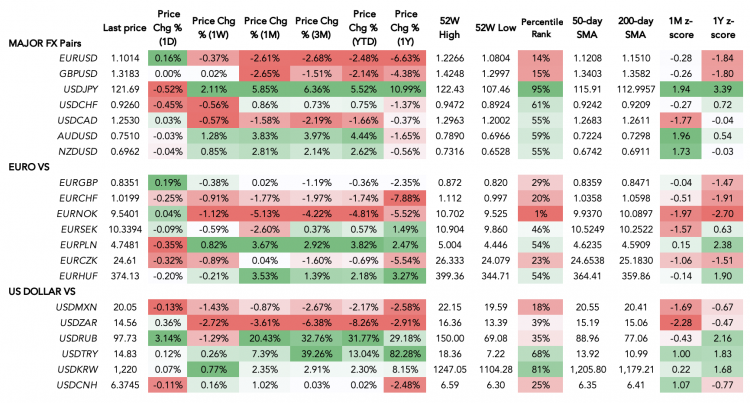Widening monetary policy divergences between Western central banks are weighing on the yen – Photo: Shutterstock It's been a volatile week on th

It’s been a volatile week on the foreign exchange market, with the Japanese yen (JPY) under pressure after losing more than 6% of its value versus the US dollar in March alone, making the yen the worst performing major currency since the beginning of the year, despite the global risk aversion backdrop.
So far, the primary forces weighing on the JPY have been widening monetary policy divergences between the Bank of Japan (BoJ) and its Western counterparts, such as the US Federal Reserve (Fed) and the Bank of England (BoE), as well as soaring commodity prices. BoJ Governor Haruhiko Kuroda recently said a weaker yen is still beneficial to Japan’s economy, but that currency movements are being closely monitored.
The top headline of the day is the White House’s Friday announcement that the US and the European Commission have launched a task force to decrease Europe’s dependency on Russian fossil fuels. The US will guarantee extra liquified natural gas (LNG) supplies for the EU market of at least 15 billion cubic metres in 2022, with further increases envisaged, according to the statement.
The Euro (EUR) reacted positively on the news, gaining 0.2% versus the US dollar.
The NATO statement issued after Thursday’s summit in Brussels cautions Russia about the use of chemical weapons in Ukraine and reiterates China’s call to abstain from helping Russia’s military effort in any form. The US Treasury Department’s Office of Foreign Assets Control (OFAC) underlined that gold transactions involving Russia’s central bank are still subject to current sanctions.
Meanwhile, a fresh wave of Covid-19 has swept over Shanghai, China’s biggest city with a population of 25 million people, resulting in a 60% rise in cases in a single day, challenging the government zero-tolerance strategy. The Chinese stock market closed 2% lower.
What is your sentiment on USD/JPY?
Vote to see Traders sentiment!
Chart of the day: A tragic March for the Japanese yen
 USD/JPY price chart – Credit: Capital.com / Source: Tradingview
USD/JPY price chart – Credit: Capital.com / Source: TradingviewForex markets today – 25 March 2022
- In London’s morning trading, the US Dollar Index (DXY) hovered at 98.65, flat on the day. The euro (EUR) gained 0.2% to $1.102, amid prospects of reducing energy dependency to Russia, while the British pound (GBP) was steady at $1.317.
- Safe haven currencies recovered slightly after heavy losses in recent weeks. The Japanese yen (JPY) and the Swiss franc (CHF) gained 0.6% and 0.3% respectively against the USD.
- Oil-linked currencies took a breather as crude prices held steady. The Canadian dollar (CAD) traded at 1.254 versus the USD, flat on the day. The Norwegian krone (NOK) gained a shy 0.1% versus the USD, after rising 0.3% yesterday.
- The high-beta Australian (AUD) and New Zealand dollars (NZD) are unchanged.
- Central Eastern European (CEE) currencies slightly rebounded following yesterday’s sell-off. The Polish zloty (PLN) climbed 0.6% versus the EUR. The Czech koruna (CZK) edged up by 0.2% and the Hungarian forint (HUF) by 0.1%.
- The Russian rouble (RUB) lost 4% against the USD, after the US declared that it will include gold transactions by the Central Bank of Russia under the existing sanctions framework, significantly reducing the room of manoeuvre to support the rouble.
- Emerging market (EM) currencies were mixed. The South African rand (ZAR) lost 0.3%, while the Mexican peso (MXN) gained 0.1%. The Korean won (KRW) and the Turkish lira (TRY) both slipped by 0.1%. The Chinese yuan (CNH) was 0.1% up.
Major currencies: Top risers and fallers today – 25 March 2022
 Major currencies: Today’s top risers and fallers, 25 March 2022, 11:00 UTC – Credit: Capital.com
Major currencies: Today’s top risers and fallers, 25 March 2022, 11:00 UTC – Credit: Capital.comForex market heatmap – 25 March 2022
 Forex market heatmap as of 25 March 2022, 11:00 UTC – Credit: Capital.com
Forex market heatmap as of 25 March 2022, 11:00 UTC – Credit: Capital.comUSD, EUR, GBP snapshot – 25 March 2022
-
Fed Futures prices are now pricing in a 68% chance of a 50 basis point hike in interest rates in May (up from 32% last week), according to the latest CME Group’s FedWatch Tool.
-
Yesterday, durable goods orders in the US decreased more than anticipated, by 1.3% month-on-month, excluding the more volatile defence and transportation goods orders. New jobless claims declined more than predicted last week, to 187 thousand, indicating dissipating effects from Omicron. The Flash Producer Manager Index (PMI) surprisingly climbed, indicating robust activity and a prolonged recovery in services.
-
Treasury yields in the US are hovering around three-year highs, with the 10-year yield easing to around 2.36% after reaching a 33-month high of 2.42% earlier this week.
-
The Ifo Business Climate index for Germany plummeted to a 14-month low of 90.8 in March 2022, down from 98.5 in February, and much below market expectations of 94.2. Bund yields held steady at 0.5%, the highest since October 2018.
-
In February 2022, retail sales in the United Kingdom fell 0.3%, following a 1.9% gain in January and falling short of market estimates of a 0.6% increase. The yield on UK 10-year gilts has fallen to 1.6%, from 1.7% earlier this week, amid mounting growth fears.
EUR/USD technical levels
- 52-week high: 1.2266
- 52-week low: 1.083
- 50-day moving average (one-day chart): 1.1208
- 200-day moving average (one-day chart): 1.1510
- 14-day Relative Strength Index (RSI) (one-day chart): 40
GBP/USD technical levels
- 52-week high: 1.4248
- 52-week low: 1.2998
- 50-day moving average (one-day chart): 1.3403
- 200-day moving average (one-day chart): 1.3582
- 14-day Relative Strength Index (RSI) (one-day chart): 41
Further reading:
capital.com
